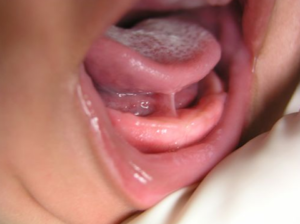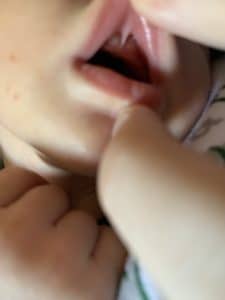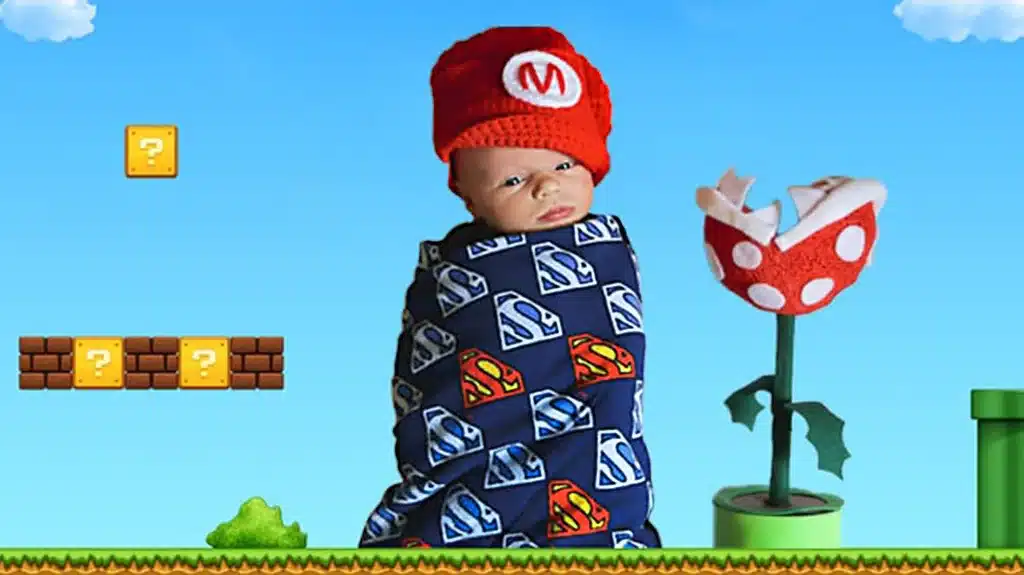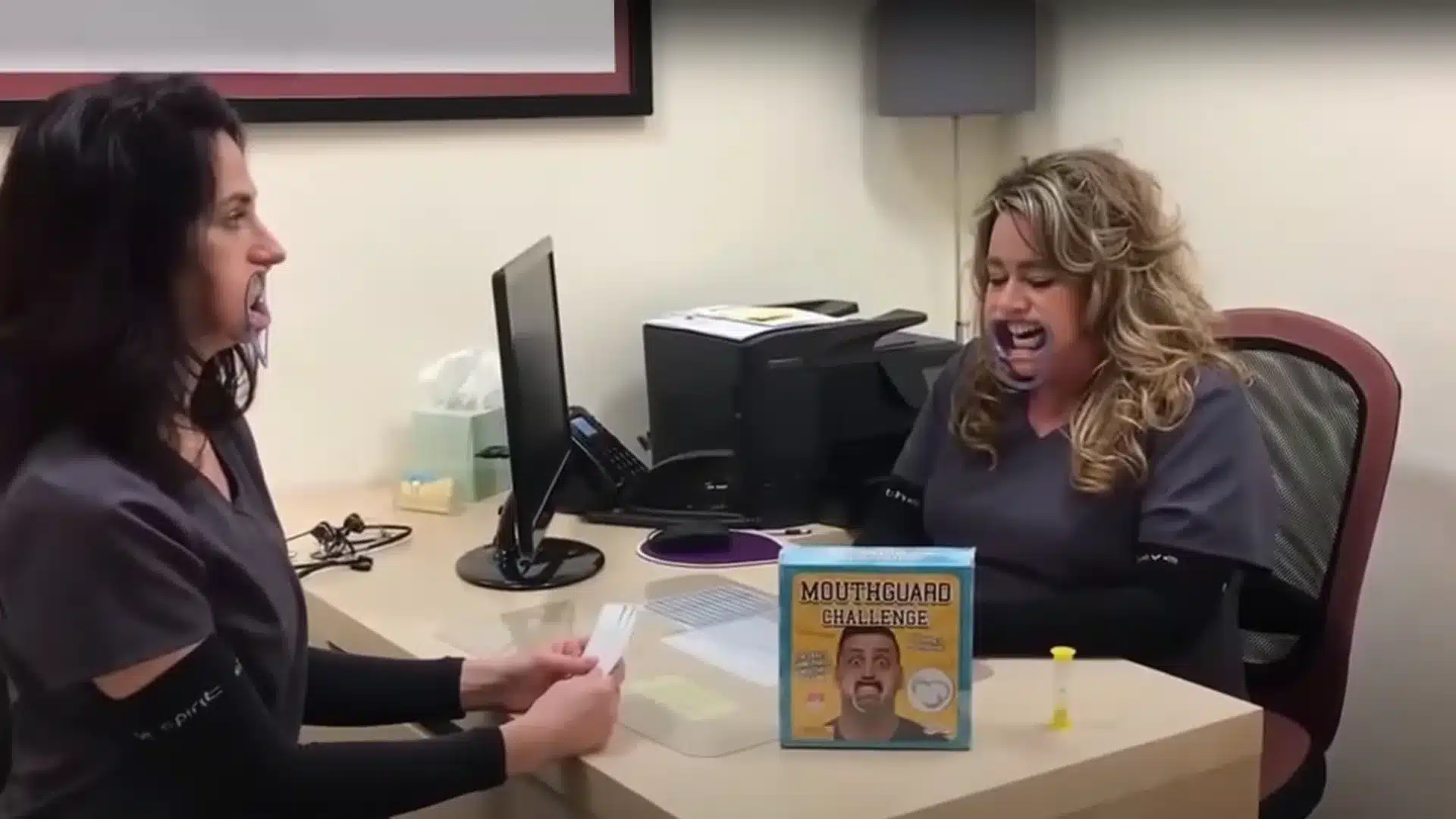Greetings Tooth Fans!
It’s Dr. Lake here, writing to you from the joyous (sometimes frustrating) land of maternity leave. I’m fortunate enough to be able to take a good amount of time to bond with my little one. (Read: Dr. Drews is a saint for running a 2-doctor practice on his own for 10 weeks.) But naturally, I can’t shut the dentist part off – so my thoughts are consumed with baby dentistry right now.
Baby dentistry, you ask?
Yeah, there’s a little bit. Some for real and some made up. I think I’m going to be writing a few posts about babies . . . so let me start by talking about newborns and oral health.

When you’re in the hospital with a newborn, the pediatricians come by to check on him daily. They examine your kid to make sure everything is looking normal. Ten fingers, ten toes, reflexes on the right track, and a whole host of other things which I thankfully don’t have to worry about because Riddle was healthy.
What was the first question I asked the pediatrician, you ask? Well, I’ll tell you. I asked “How’s his lingual frenum?” Dr. Glass laughed and said, “Kristie, I don’t think I have ever had a patient ask that. His frenum looks great. No tongue tie.”
Newborn Oral Health Concerns
Two oral health concerns that can be evident at birth are ankyloglossia (tongue tie) and a severe superior labial frenum attachment (lip tie). Either or both of these conditions can affect speech, produce esthetic concerns, and affect breastfeeding. Let me explain . . .
What’s a frenum?
Basically, there are thin bands of tissue which attach your gum to your upper and lower lips and your tongue to the floor of your mouth. Those thin bands are referred to as frena (the plural of frenum). You might also see it called a frenulum. While frenum seems like a pretty strange word for a tiny piece of connective tissue, it comes from the latin “frenum” meaning bridle (as in reins and a bit). And that’s what a frenum does, it helps keep everything in check and working together.
The lingual frenum attaches your tongue to the floor of your mouth. If you look in the mirror and lift your tongue, you’ll see it. It’s what anchors your tongue to the floor of your mouth.
The maxillary labial frenum in your upper arch attaches your gum to your upper lip between your two front teeth. If you look in the mirror and lift your upper lift, you’ll see it.
The mandibular labial frenum connects the inside of your lower lip to your gums between your two lower front teeth.
While all of this is a normal part of human anatomy, in some circumstances those attachments can be too thick or located in a position that can cause problems when left untreated.
Ankyloglossia (Tongue-tie)
The most obvious newborn oral health concern is called ankyloglossia, or “tongue tie.” Tongue‐tie happens when the lingual frenum (the one that tethers the bottom of the tongue to the floor of the mouth) is unusually short, thick or tight. It is present in approximately 4% to 11% of newborns.

It is vital for a nursing infant to be able to cup his tongue around the nipple and move the mother’s breast tissue to the roof of his mouth in order to extract the milk. With a short frenum, or one in the wrong position, this process is inhibited and may result in a failure to latch, pain and/or nipple damage to the mother, and poor weight gain and malnutrition in the infant.
So you can see why I was keen to ensure that Riddle’s lingual frenum was in the right place . . . no one wants sore nipples or an infant who isn’t getting the nourishment he needs! And, later in life, this can cause further issues including difficulty with speech, particularly sounds like “d”, “l”, “s”, “t”, and “th.” It further prevents thorough cleansing of the oral cavity with the tongue to remove food particles from the corners of the mouth.
Severe Superior Labial Frenum Attachment (Lip-tie)
The superior labial frenum (also known as the maxillary labial frenulum) attaches the gum to the lip between the two front teeth. An unusually tight labial frenulum can keep the upper lip tethered to the gum line and also cause an issue with a proper latch being formed during breastfeeding, though this manifests as a lack of complete suction which results in excessive air intake. This causes excessive gas in the infant, or perhaps reflux. This reflux can often be mistaken by a pediatrician for acid reflux, causing the baby to be placed on unnecessary proton pump inhibitor medications.
As the child ages and the primary dentition erupts, this can also create a space between the two front teeth, termed a diastema. This space can remain as the permanent dentition erupts, unless the frenum is removed.
Frenectomy Options
So what can be done about the lingual or labial frenum? In the event that intervention is necessary, and it isn’t always, the frenum can be removed in a procedure termed a “frenulectomy” or “frenectomy.” In the case of a prominent frenum attachment that is deemed to cause difficulty with nursing, this is usually accomplished in the hospital using topical anesthetic and sterile scissors. Should there be concern that the frenum is extra thick or significant bleeding is expected, the procedure is carried out by a pediatric dentist or an ENT specialist using a laser.

It Isn’t Always Necessary
As the baby gets older, the maxillary frenum does change its structure somewhat. In instances where a frenectomy is not indicated during infancy but the frenum is still prominent, a wait and see approach is perfectly acceptable. This is what we’re doing with Riddle – see the picture I sent to one of my favorite pedodontists to get his opinion.
Who really wants to expose their infant to a surgery unless it’s absolutely necessary, no matter how routine?! So if breastfeeding is going okay, or if the infant is exclusively bottle feeding (since bottle feeding does not require the same mechanics as breastfeeding), the frenum can be revisited when the child is older.
Should the frenum thin or migrate upwards then it may not cause any issues at all. It also could tear naturally because let’s face it – kids are a bit clumsy when they walk. If this happens, try your best not to freak out; it’s a vascular area so there’s a lot of bleeding, but most of the time there is no intervention necessary.
As the child gets older, if the frenum is still in a position where it is causing a diastema with the baby teeth, a frenectomy is an option at that point.
And, as a new mom, I will say that if you are breastfeeding and experiencing any issues (nipple pain and/or slow weight gain for your baby), you might want to take a look at this page of La Leche League’s website or use their locator page to find additional local breastfeeding help.
Well, time to get back to the kid. More on baby dentistry in my next blog post! I’ve been back to work since the first week of December, so I’ll see you soon. 🙂
Love & Nursing Successfully Because Riddle Has a Great Frenum,





